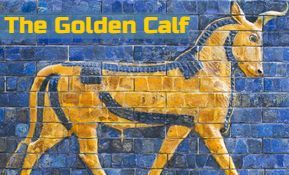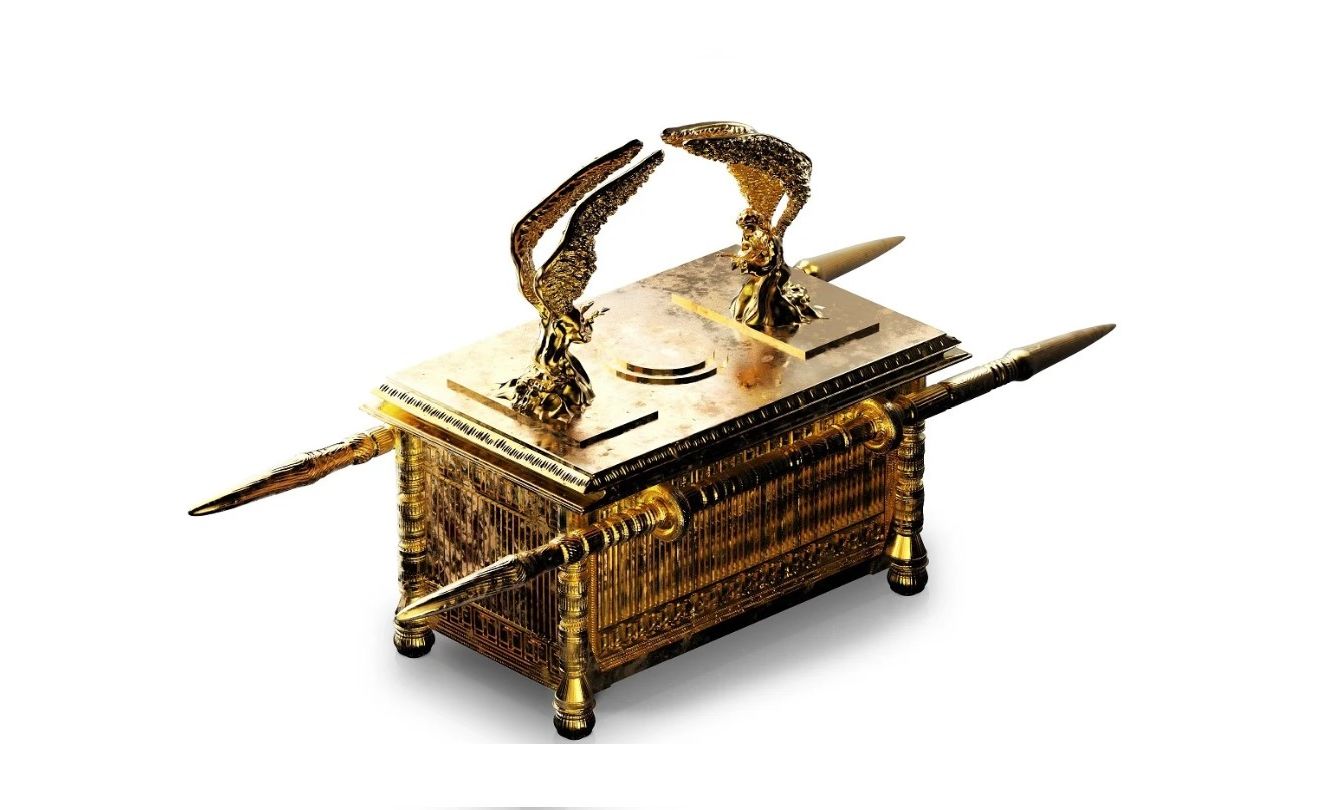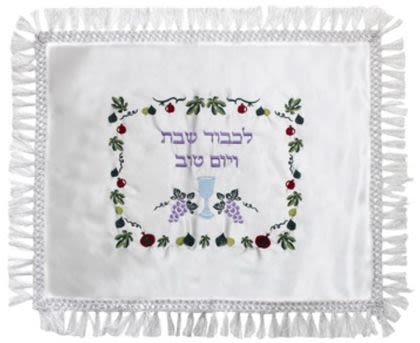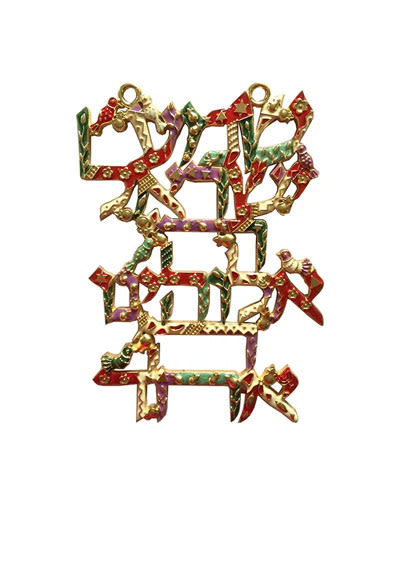
Vayeitzei: Jacob’s Ladder
Driving past the Jerusalem botanical gardens, you'll notice an impressive sculpture of Yaakov's (Jacob’s) ladder...

Jacob’s Ladder
Driving past the Jerusalem botanical gardens, you'll notice an impressive sculpture of Yaakov's (Jacob’s) ladder. What is so special about Yaakov's ladder that it has inspired many works of art?
In the Torah, dreams are vehicles for prophecy. Yaakov's dream at Mount Moriah symbolized the future of the Jewish people and man’s ability to connect to God’s master plan.
Rabbi Dr. Elie Munk, of Paris, provides us with a deep and inspiring interpretation of Yaakov's dream that teaches us how to relate to our prayers. We can understand the inner structure of the morning service – Shachrit – by looking at the Midrashic interpretation of Yaakov's dream.
“And behold a ladder was set on earth and its summit reached to heaven” (Bereishit 28:12). According to the Zohar (I, 269a), this ladder is the prayer we utter on earth that reaches up to heaven.
Our Goal in Prayer
A ladder is the tool of ascent; it symbolizes intensity rising to a climax. This should be our goal in prayer – to reach God enthroned on high. Yaakov sought the way to God in his prayer, and in his dream, God showed him the way. Our purpose in coming to the synagogue for Shachrit is to elevate ourselves, step by step, above our attachment to materialism until we meet God’s presence at the summit. But first we must make the effort to reach up to God, just as the angels first ascended the heavenly ladder to bring the earthly prayers to the throne of the Almighty, and only then did they descend.
The Midrash tells us that the heavenly ladder contained four rungs. The Rambam (Maimonides), in the introduction to “The Guide for the Perplexed,” describes the four rungs of this ladder as four levels through which human perception must advance to attain knowledge of God.
“And behold a ladder was set on earth…” – the ladder represents the connection of the material beings in the physical world to spiritual worlds beyond their own perception.
The Four Rungs:
1. “Set on earth” – the first rung corresponds to our senses, perceptions and experiences, from which all knowledge is based.
2. “And its summit reaching up to heaven” – this is the next level of knowledge, the world of the heavenly spheres.
3. “And behold the Angels of God went up and down on it” – the transcendental world of the Angels.
4. “And behold, God stood over it” – the fourth and ultimate stage, the goal of human understanding and the goal of our prayer.
Rabbi Isaiah Horowitz, the great mediator between Kabbalistic and philosophical thought, points out that Rambam's “four worlds of philosophy” are identical to the “four worlds of the Kabbalah”:
1. The world of doing (asiyah) – the sphere of material phenomena
2. The world of shaping (yetzirah) – the forms
3. The world of creating (briyah) – active forces
4. The world of the spirit (atzilut) – the world of pure ideas
In our quest for truth we must pass through all these levels to succeed. From our experience in sensory perception, we extrapolate the natural laws, the ‘forms’ which make the laws of nature what they are. Then we proceed by logical analysis to seek the causes, the ‘active forces’ that create these forms. Ultimately we can arrive at the Supreme Reason which is the innermost soul and prime cause moving and controlling the lower worlds.
This path in our quest for truth is the same path we try to follow each morning in the synagogue as we are guided by our Siddur (prayer book) to ascend to the Divine presence of the Creator.
The daily Morning Prayer is divided into four parts, reflecting the ascent through the “four worlds.” These parts are:
1. From the Morning Blessings until Pesukei D’Zimrah (Verses of Praise)
2. The Pesukei D’Zimrah – until Borchu (Bless God)
3. The Shema and its Blessing – From Barchu until Gaal Yisrael
4. The Shemoneh Esrei – the Amida, or Silent Benedictions
In the first part of our prayers, we demonstrate our appreciation for our practical needs, like awakening and clothing. A blessing for the work and welfare of the day follows. A description of the daily offerings in the Temple comes next, a practical and very physical matter. The entire beginning is devoted to the world of doing, the world of material phenomena, from which our quest for God must begin.
The next section, the Pesukei D’Zimra, deals with God’s revelations of Himself in nature and history. “Praise Him, sun and moon; praise Him, all bright stars…Praise Him from the earth, sea giants and all watery depths…” The splendor of nature and the beauty of the reality of our world all proclaim the glory of God. In this section our thoughts rise from human activity to the ‘world of forms’ – the shapes and forms which are the background of the activities of our daily life.
Through appreciating the beauty around us, we can learn to appreciate the One Who created that beauty. During the morning prayers, R' Shraga Feivel Mendlowitz z"l would sit near the window, so he could look out and be inspired by the beauty of the world as he prayed.
Behind the ‘world of form’ we can discern the ‘world of creation’ to which the third section of our prayers is devoted, the world of the active forces that dominate creation.
There are three types of forces: the forces of nature – the spiritual and moral forces, and the forces of history and destiny. The three blessings of Shema (two before and one after the verse "Hear O Israel…) correspond to these forces. The first expresses God’s mastery over nature, in the second we pray for intellectual and moral attainment through the study of Torah, and finally, we describe God’s role in the flow of history. Above all we proclaim with every fiber of our being the unity and mastery of God, “Shema Yisrael…!” "Hear O Israel!"
The realization that God is the source of all cosmic forces guides us to the highest rung of the heavenly ladder, the ‘world of pure spirit.’ We enter this world at the climatic moment of our prayer, the Shemoneh Esrei, when we stand in silent awe in God's presence.
This is Yaakov’s dream – the revelation of the ladder reaching towards heaven, with four rungs corresponding to the four worlds our Sages incorporated into the structure of our prayer.
A Near Miss
But Yaakov nearly missed the revelation. The Sages say that Yaakov passed by Mount Moriah, the same place where his father Yitzchak was almost sacrificed, but didn't stop there. When he was almost in Charan, he realized his mistake and turned back. He thought, “How could I have passed the place where my ancestors prayed and not stop to pray there?” At that moment, Mount Moriah miraculously came to meet him halfway. The sun set prematurely, and he settled down for the night and had the dream.
Why did he merit to this miracle now, and not on the first leg of his trip? When Yaakov had resolved to pray at the same place where his ancestors stood, God met him halfway. First, however, he had to take the initiative and reach out to God in prayer. Because Yaakov made a firm decision to connect to the spiritual legacy of his forefathers, God revealed to him the stunning prophecy of the ladder, demonstrating the avenue of ascent for all generations.











